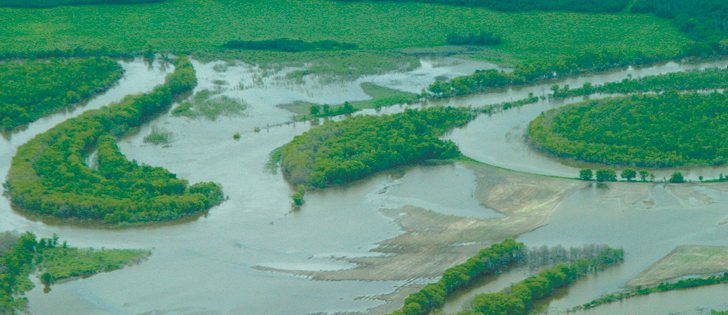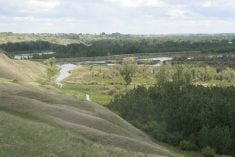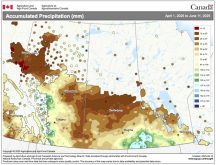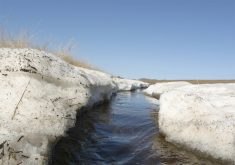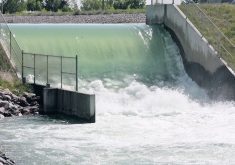New agency launched | Tighter regulations and enforcement are expected soon
Saskatchewan plans to crack down on illegal drainage activities, says the minister responsible for the new Water Security Agency.
Ken Cheveldayoff said tighter regulations and enforcement are coming.
Illegal drainage of farmland has always been a concern but has become a huge problem during the last few years of flooding, particularly on the east side of the province.
Landowners can drain on their own property, but they are not allowed to move water onto someone else’s land.
Cheveldayoff said people repeatedly told the consultation process into the new agency and a water security plan that something had to be done.
Read Also

Pakistan reopens its doors to Canadian canola
Pakistan reopens its doors to Canadian canola after a three-year hiatus.
“We’re going to get more aggressive in that area because we realize there is a lot of illegal drainage that is going on,” said Cheveldayoff, who became environment minister at the end of May.
“In the environment ministry, you hear about it very quickly.”
The agency replaces the former Saskatchewan Watershed Authority and now includes staff who used to work in the environment, agriculture and highways ministries. It is designed to be the go-to ministry for all water-related issues.
Drainage is a key component of the agency’s 25-year water security plan, which includes goals regarding sustainable water supply, drinking water safety, water protection, dam safety, flood and drought damage reduction and governance.
Cheveldayoff said the government will work more closely with rural municipalities to make sure drainage regulations are enforced.
Saskatchewan Association of Rural Municipalities president David Marit said resolutions passed at recent conventions have asked the province for heavier penalties and better enforcement.
RM councils are often involved when neighbours complain about each other’s unauthorized drainage works.
Marit said it’s happening all over the province but predominantly on the east side.
“When the system is full and then the people higher up decide to drain their land, it just overfills everything,” he said.
Manitobans have complained about water coming from Saskatchewan, while Saskatchewan communities were threatened even though there is no natural water source nearby.
Cheveldayoff said farmers and landowners must get away from the practice of draining first and asking permission later.
Today’s larger and more advanced equipment allows farmers to do much of their own drainage work, Marit said.
“You can do your elevations right in your tractor and you can move a lot of dirt in a short order of time compared to even five years ago.”
He said SARM supports organized drainage programs as long as everyone is at the table. The issue has to be tackled soon, he added.
He also said stronger penalties work only if there are enough people to enforce them. The cost of adding staff to check on drainage could outweigh the penalties.
“It’s a daunting task to be able to do it with the amount of employees that we have and to monitor it across the province,” he said.
However, he said the agency will likely rely on technology to help.
“With satellite technology and all of that, it is becoming easier to see diversions that have happened over the last period of time,” he said.


